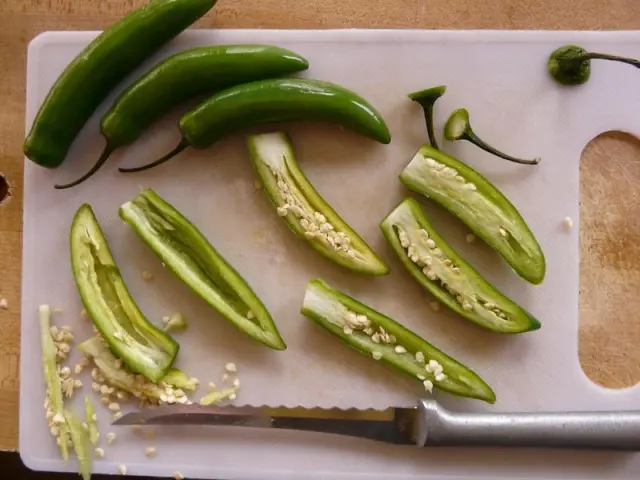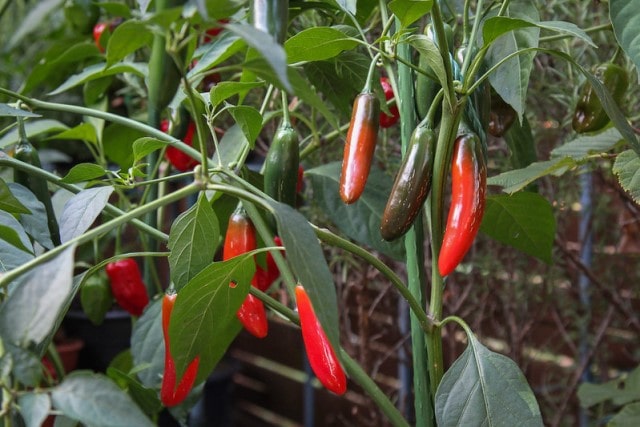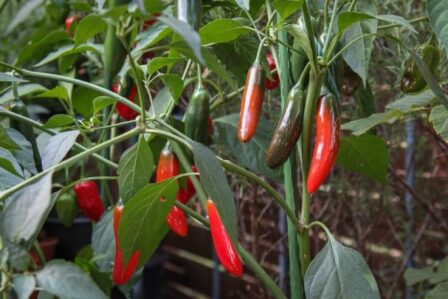Serrano peppers, known for their vibrant flavor and moderate heat, are a popular choice for those who enjoy adding a spicy kick to their dishes. Growing serrano peppers from store-bought peppers is a rewarding and cost-effective way to ensure a fresh supply of these fiery delights in your garden. This comprehensive guide will take you through the step-by-step process of cultivating serrano peppers from store-bought peppers, allowing you to enjoy nurturing your spicy harvest.
Materials Needed:
- Serrano Peppers: Begin with fresh, healthy serrano peppers purchased from a reliable source. Choose peppers that are plump, firm, and free from any signs of disease or damage.
- Potting Mix: Use a well-draining potting mix with a balanced blend of organic matter. You can also mix your own by combining equal parts of peat moss, perlite, and vermiculite.
- Pots or Containers: Select pots or containers with drainage holes to prevent waterlogging. Serrano peppers can be grown in containers of various sizes, but a 5-gallon container is a good starting point for a single plant.
- Garden Tools: Gather essential gardening tools such as a trowel, watering can, and pruning shears.
- Grow Lights (Optional): If you are starting your serrano peppers indoors, consider using grow lights to provide adequate light for seed germination and early growth.
Step-by-Step Guide on Growing Serrano Peppers from store bought peppers

- Selecting and Preparing the Peppers:
Choose fresh serrano peppers with healthy seeds. Look for peppers that are fully ripe but not overripe.
Cut the peppers open and carefully remove the seeds. Rinse them thoroughly to remove any remaining pulp.
2. Seed Germination:
Fill seed trays or small pots with the potting mix, leaving a small indentation in the center of each cell.
Place one or two seeds in each indentation and cover them with a thin layer of potting mix.
Water the seeds lightly, ensuring that the soil remains consistently moist but not waterlogged.
To encourage germination, maintain a warm temperature between 70-80°F (21-27°C). You can use a seedling heat mat if needed.
3. Transplanting Seedlings:
Once the seedlings have developed a couple of sets of true leaves, transplant them into larger pots or containers.
Ensure proper spacing, allowing at least 18 inches between plants if you are planting multiple serrano pepper plants.
4. Choosing the Right Location:
Serrano peppers thrive in full sunlight. Choose a location that receives at least 6-8 hours of direct sunlight per day.
If you are growing peppers indoors, place them near a south-facing window or provide supplemental grow lights.
5. Soil Preparation:
Before transplanting seedlings, prepare the soil in the chosen containers or garden bed. Serrano peppers prefer well-draining soil with a slightly acidic to neutral pH (around 6.0-7.0).
Amend the soil with organic matter such as compost to improve fertility and drainage.
6. Watering and Fertilizing:
Keep the soil consistently moist but avoid overwatering, as serrano peppers are susceptible to root rot.
Fertilize the plants with a balanced, water-soluble fertilizer every 2-3 weeks, following the package instructions.
7. Support and Pruning:
As the serrano pepper plants grow, provide support with stakes or cages to prevent bending under the weight of the peppers.
Prune the plants to encourage bushier growth and better air circulation. Pinch off the tips of the branches when the plants are around 12 inches tall.
8. Pest and Disease Management:
Keep an eye out for common pests such as aphids and caterpillars. Remove them by hand or use natural insecticides if necessary.
Ensure good air circulation to prevent fungal diseases. Avoid overhead watering to reduce the risk of foliar diseases.

9. Harvesting:
Serrano peppers typically mature in 70-90 days after transplanting. Harvest the peppers when they reach their full size and have a vibrant color.
Use clean, sharp scissors or pruning shears to cut the peppers from the plant, leaving a small portion of the stem attached.
10. Saving Seeds for the Next Season:
To continue the cycle, save seeds from mature serrano peppers. Allow the seeds to dry completely before storing them in a cool, dry place for the next planting season.
Conclusion:
Growing serrano peppers from store-bought peppers is a fulfilling and accessible endeavor for both novice and experienced gardeners. By following these step-by-step guidelines, you can enjoy a bountiful harvest of fresh, homegrown serrano peppers that add a delightful kick to your culinary creations. Experiment with different varieties, and soon you’ll find yourself with a thriving pepper garden that provides a continuous supply of these flavorful and spicy delights.
MORE POSTS:

